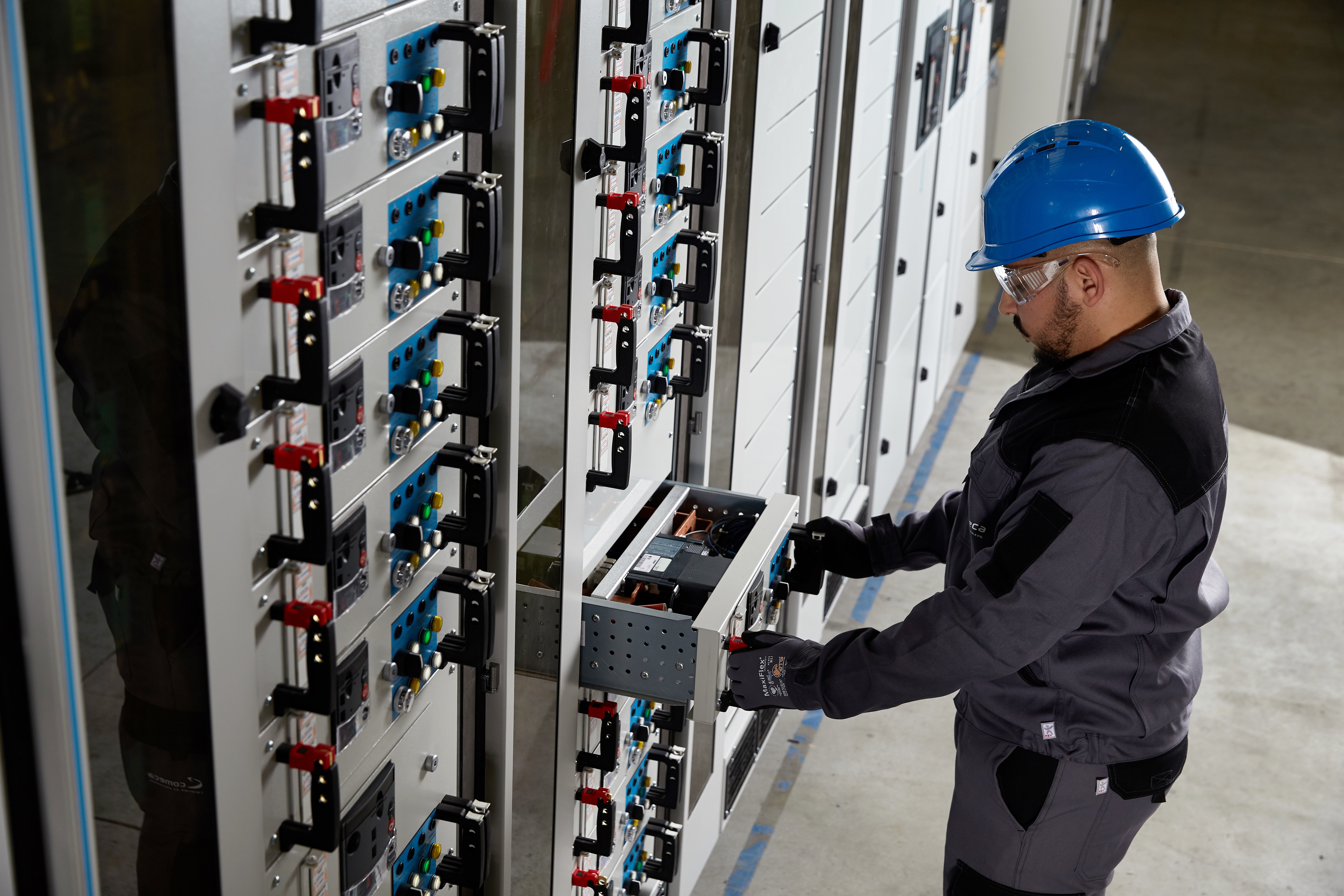Solutions to be explored to reduce curative maintenance costs
Corrective maintenance, also called curative maintenance in the case of cause finding, consists in intervening on an installation to repair or change a necessary element for its use. Therefore, corrective maintenance is generally preceded by a breakdown or defect leading to the complete or partial unavailability of the equipment.
Preventive maintenance as a cost reduction strategy
Preventive maintenance reduces the probability of equipment failure or defect. It helps to reduce costs and improve the safety of your low-voltage installation. 2 types of preventive maintenance can be distinguished:
- Systematic preventive maintenance, which is carried out according to an established schedule and mainly concerns
- Equipment subject to regulated safety (lifts, fire extinguishers...).
- Equipment whose failure would jeopardise staff's safety
- Equipment that generates high repair costs.
- Equipment which, with unusually high consumption, is harmful to the environment.
2. Predictive maintenance which is inseparable from experience. In fact, it consists in checking the installation following the identification of its weak points during its use. It is therefore a personalised maintenance which requires rigorous monitoring carried out with help of relevant measures.
Have a maintenance plan for your infrastructure
Your infrastructure, i.e. your installations and equipment, requires maintenance and therefore the drafting of a conscientious maintenance plan to avoid breakdowns and malfunctions.
Whether you have a dedicated in-house team or whether you use subcontractors, maintenance is essential for a company:
- preservation of production or provision of services
- increase the lifetime of your assets
- cost cutting
- improved working conditions...
It represents a key to a company's competitiveness.
Comply with the maintenance standard to preserve your low-voltage installations
Set up by Afnor, the NF X60-000 April 2016 standard (former NF X60-010 December 1994, FD X60-000 May 2002) is designed to preserve your low voltage installations, both in terms of equipment value, performance and safety. With this in mind, it distinguishes 5 main levels of intervention:
- Level 1: It concerns operations of reduced complexity, requiring only a reduced number of consumables.
- Level 2: It mainly refers to simple preventive maintenance or troubleshooting actions, such as adjustments, sensor checks, belt replacements, etc.
- Level 3: It requires the know-how of specialised technicians. The procedures here are more complex and normally require precise diagnosis before intervention.
- Level 4: This level covers maintenance operations of great importance, requiring special technical expertise. These include vibration or heat level analyses using infrared.
- Level 5: This type of operation is mainly entrusted to the manufacturer or rebuilder. The means applied are very similar to those used in the manufacturing process
From level 3, these maintenance operations require the intervention of specialised technicians, as only the know-how of your original manufacturer can provide you with.
Reduce care expenses
You benefit from preventive maintenance as part of your maintenance contract and save money. The maintenance contract for your low-voltage switchgear provides you with:
- Assistance, advice
- Planned preventive maintenance, maintenance plan
- Availability of equipment (stock of spare parts)
- The guarantee of intervention within a given time
- Controlled pricing
Thanks to the maintenance contract you control your annual budget while reducing your costs. Which is not the case when you call upon your service provider for emergency interventions.
Ending the "break-repair" cycle
The faster you can fix a technical problem, the lower the repair costs will be. A faulty component can lead to downtime that can be very expensive due to lost productivity for example. A topic already covered in our article: 
Replacing a faulty component before it brings the system to a standstill prevents this loss of productivity, which saves money in the long run. Once again, you control costs, save money and free up budget for strategic projects that will ensure future revenue growth. Which is exactly what strategic cost control should achieve.
Retrofitting your installations to increase your switchboard's life cycle
Retrofitting is the replacement of old or defective equipment or materials (drawers, circuit breakers, contactors, ...) by new equipment or materials with at least equivalent functions. This solution makes it possible to replace an obsolete component before it immobilises your system. The purpose of the retrofit is to ensure and guarantee :
- Service continuity
- A very high level of availability
- The reliability of your installation
- The safety of your operators following the replacement of obsolete equipment
- A replacement solution that fits your needs
- Extending the life of your installation
- The modernisation of your installation (example: communication)
- An optimised outage time
The low-voltage switchboard manufacturer anticipates the replacement of an item by using studied solutions. These kits are prepared in the factory for a simple installation. This modernisation in no way degrades the electrical characteristics of the switchboard. The retrofit increases the reliability of your installation and reduces the costs associated with an unexpected production stoppage or emergency repair.



